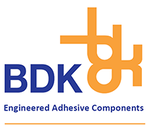EWMA continues to be focused on new innovation in woundcare and the incorporation of sensors into woundcare dressings was a topical subject at the exhibition this year.
In this article, we will explore the aims behind this innovation and the direction it is heading in this year and beyond.
Why is the Incorporation of Sensors into Woundcare Dressings Important?
The incorporation of sensors into woundcare dressings, also known as smart dressings, involves taking the standard construction of a product and integrating a sensor or flexible electronic. This sensor then generates and electronic signal which can be read from a device in a different location. The product has the look and feel of a dressing, but has the ability to monitor, read and collect health data.
The incorporation of electrical components and flexible circuitry is already present in the wearables market, with products such as Mobile Cardiac Monitoring Devices and Continuous Glucose Monitoring (CGM) both current examples, and something the woundcare industry aspires to. This is just the start of the journey in the woundcare market and the capability to treat patients in their home environment is the driving force behind the innovation.
There are many benefits of providing medical care from home. These include:
- Freeing up beds and speeding up response times in hospitals, therefore saving money for the hospitals
- Being able to heal in a comfortable environment; to be more mobile and flexible
- Being able to heal quicker
Where Are Smart Dressings Heading in the Future?
At this moment in time, there are many different sensors available which can take different types of readings and be placed anywhere on your body. These include passive dressings which monitor the dressing for areas such as level of saturation, infection etc., or active dressings which provide positive or negative pressures of electrostimulation to a wound.
The main hurdles this innovation is facing is the challenge of creating a sensor to determine when dressings need to be changed and where to store the data collected from the sensor. A nurse uses their experience and training to determine when to change a dressing and this needs to be transferred to the sensor, so home medical care can continue. Plus, the data collected from the sensor needs to be put into a hospital system that’s reliable and secure. These are both factors that are currently being worked on to keep the innovation progressing.
Smart Dressings from BDK
Smart dressings are a new innovative product soon to emerge into the woundcare market. BDK is actively working on incorporating printed electronics and flexible substrates within existing woundcare technologies.
If you’d like to talk to us about new or future opportunities, please get in touch here.
